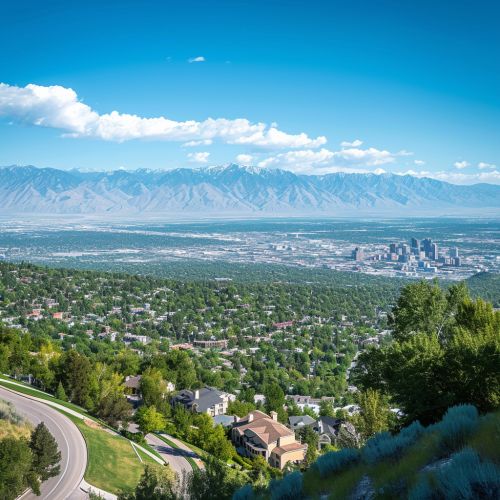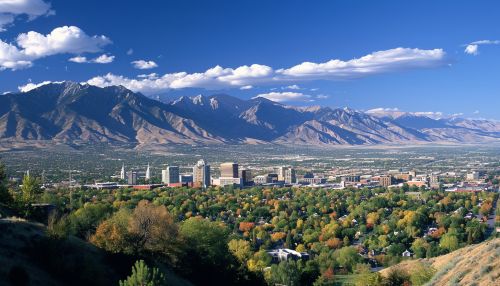Salt Lake City
Geography
Salt Lake City is situated in the northeastern part of Utah State, in a valley of the Wasatch Mountains to the east and north, and the Oquirrh Mountains to the west. The city is located in the Salt Lake Valley, a larger geographical area that includes other cities such as West Valley City and South Salt Lake. The city's elevation is 4,226 feet (1,288 meters) above sea level.


The city is known for its stunning natural beauty, with the Great Salt Lake to the northwest and the snow-capped peaks of the Wasatch Range providing a picturesque backdrop. The city's geography also includes several parks, such as the renowned Sugar House Park and Liberty Park, which offer recreational opportunities for residents and visitors alike.
History
Salt Lake City has a rich and diverse history. It was first inhabited by the ancient Puebloans and later by the Ute, Shoshone, and Paiute tribes. The first Europeans to arrive in the area were Spanish explorers in the late 18th century, followed by trappers, traders, and settlers in the early 19th century.
The city was founded on July 24, 1847, by Brigham Young and other pioneers who were members of The Church of Jesus Christ of Latter-day Saints, also known as the Mormon Church. They were seeking a place to practice their religion without persecution and named the city "Great Salt Lake City" after the nearby Great Salt Lake. The word "Great" was dropped from the name in 1868.
Demographics
As of the 2020 census, Salt Lake City has a population of approximately 199,355 people. The city has a diverse population, with a large number of residents of Hispanic or Latino origin, as well as significant communities of Asian, African American, and Native American residents.
The city is also home to a significant number of members of The Church of Jesus Christ of Latter-day Saints, although the percentage of LDS members is lower in the city than in Utah as a whole.
Economy
Salt Lake City has a diverse economy, with key sectors including government, trade, transportation, utilities, and professional and business services. The city is home to several large corporations, including Huntsman Corporation, Zions Bancorporation, and Questar Corporation.
The city is also known for its vibrant startup scene, with a growing number of tech companies choosing to base their operations in the city. This has led to Salt Lake City being dubbed the "Silicon Slopes," a play on California's Silicon Valley.
Culture
Salt Lake City is known for its vibrant arts scene, with numerous galleries, theaters, and music venues. The city is home to the Utah Symphony, the Ballet West, and the Utah Opera, as well as several theater companies.
The city also hosts several large festivals each year, including the Sundance Film Festival, one of the largest independent film festivals in the United States.
Education
Salt Lake City is home to several institutions of higher education, including the University of Utah, Westminster College, and Salt Lake Community College. The city's public schools are administered by the Salt Lake City School District.
Transportation
Salt Lake City is served by a comprehensive transportation network, which includes the Salt Lake City International Airport, one of the busiest airports in the United States. The city also has an extensive public transportation system, operated by the Utah Transit Authority, which includes buses, light rail (TRAX), and a commuter rail service (FrontRunner).
